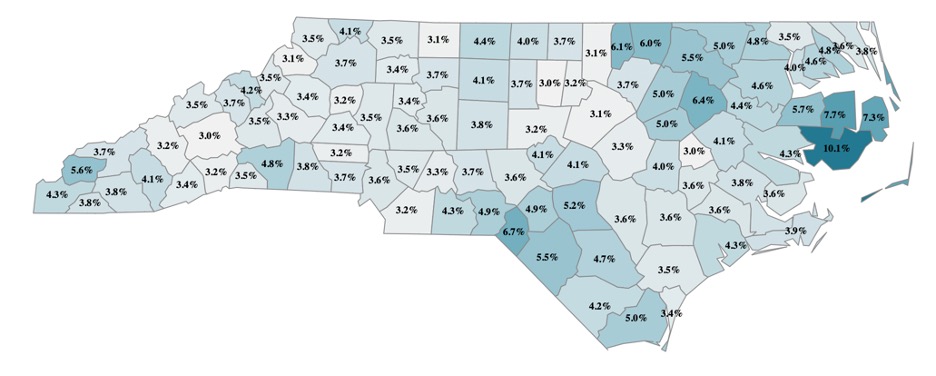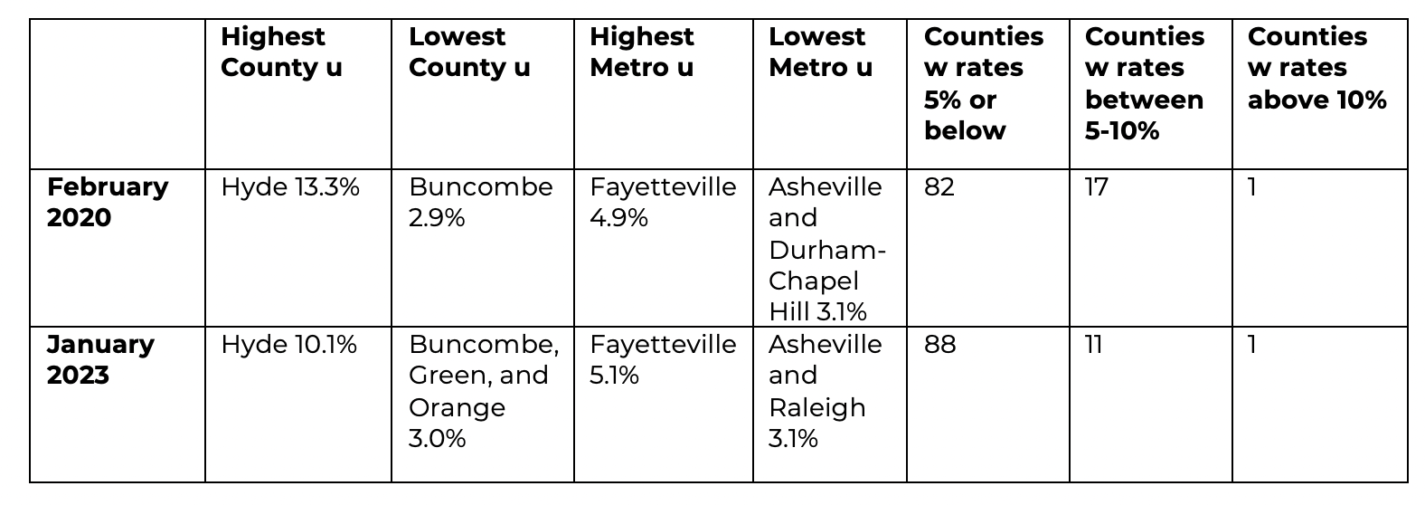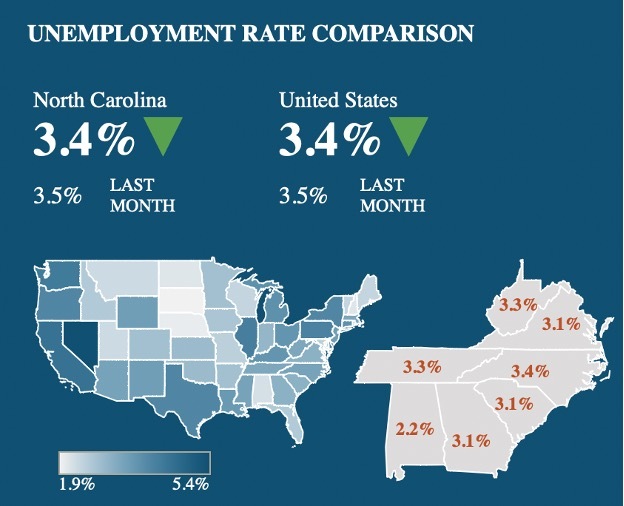Unemployment rates increased in all but one of North Carolina’s 100 counties in January, according to the latest release from the state’s Department of Commerce. These local rates are not seasonally adjusted and are subject to large seasonal patterns.
Even so, after months of decreasing unemployment rates as the economy recovered in the wake of the Covid pandemic and government-forced shutdowns, state and national unemployment rates have been reversing that trend of recovery. The state unemployment rate for January was 3.8%. Meanwhile, labor force participation rates continue to decline along with real wages.
According to the county-level release, “When compared to the same month last year, not seasonally adjusted unemployment rates decreased in 71 counties, increased in 14, and remained unchanged in 15. Eleven of the state’s metro areas experienced rate decreases over the year and four remained unchanged.” This mixed data doesn’t show significant progress or regression and requires additional analysis. It is also important to note that rates were still steadily decreasing at this time last year.

The release states, “Hyde County had the highest unemployment rate at 10.1 percent while Greene, Buncombe, and Orange Counties each had the lowest at 3.0 percent. All fifteen of the state’s metro areas experienced rate increases.”
Comparing today’s unemployment data to pre-pandemic figures shows mixed data: the metropolitan areas have higher unemployment rates today, but more counties have rates below 5% unemployment.

Unemployment data, however, doesn’t show the whole picture. In fact, unemployment is considered a lagging indicator for periods of economic growth or decline.
In every metro area except Charlotte, Durham, Jacksonville, and Wilmington, the labor force has shrunk from pre-pandemic levels. Statewide, the labor force has decreased. Using statewide data from January, if the labor force participation were at pre-pandemic levels, our state would have 68,429 more people in the labor force.
This means that as people stop looking for work, they are no longer counted in the unemployment rate, making the economic data look better than it is.
As I wrote previously, this trend is not unique to North Carolina. But it is important as a strong labor force is crucial to any economic recovery. And people’s attachment to the job market is important for more than a paycheck. Jobs also bring stability and well-being. As the nation experiences recession warning signs, labor force participation will be important to watch.


